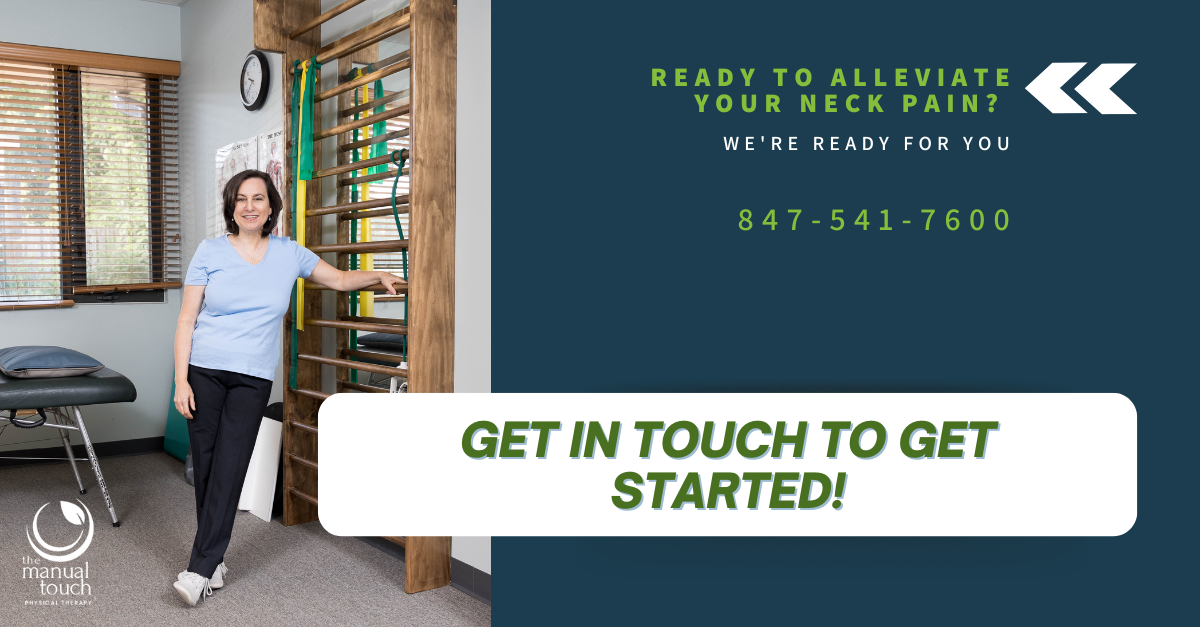Waking up stiff and unable to turn your head is more than just inconvenient—it’s literally a pain in the neck. Suddenly, simple tasks like driving or working feel impossible. The pain may even creep up into your head or travel down your arm, sometimes accompanied by numbness or tingling. This is acute neck pain, a type of pain that comes on suddenly and can disrupt your day.
But what happens when this acute pain isn’t addressed? Over time, it can transition into chronic neck pain, which lingers for months or even years. While chronic pain might not always interfere with daily activities, it’s still frustrating to live with.
The good news? You don’t have to. Whether you’re dealing with acute episodes or chronic discomfort, physical therapy offers solutions to alleviate neck pain and regain your quality of life.
Acute Pain vs. Chronic Pain: Know the Difference
Acute neck pain needs immediate attention to prevent it from becoming chronic. Addressing it early can often resolve the issue in just a couple of physical therapy visits. Chronic neck pain, on the other hand, typically requires a longer-term approach.
At The Manual Touch, we take the time to evaluate you as a whole person, uncovering the root causes of your discomfort. Together, we’ll develop a tailored treatment plan that combines hands-on techniques, exercises, and education to both alleviate neck pain and prevent it from coming back.
Your Neck Pain First Aid Kit
For those times when you can’t make it to physical therapy right away, I’ve put together a first aid kit to help alleviate neck pain at home. These exercises, tips, and positioning strategies are gentle and effective—but remember, if any movement worsens your symptoms or causes pain to radiate down your arm, stop immediately.
Exercises to Alleviate Neck Pain
Instead of stretching your neck directly, focus on moving your body to reduce strain:
- Hip Mobility in Three Planes: These movements have you moving your body on your neck instead of your head on your neck – usually much more comfortable and teaches you to use your body so as not to overuse your neck.
- Wash the Wall: Place your hands on the wall, shift your weight to one side as you slide your arm up the wall, return arm and weight to starting position.
- Seated Thoracic Mobility: Sitting in a chair, cross your arms on your chest, look straight ahead, rotate your body to the right and left while looking straight ahead so as not to move your head.
- Chair Rotations: Sit forward-facing in a desk chair that can rotate, cross your arms across your chest, rotate the chair to the right and left while looking straight ahead so as not to move your head.
- Core Stability on Your Back: Strengthen your core to support your neck.
Best Practices for Posture and Positioning
Good posture and positioning can alleviate neck pain significantly:
- Sitting: Choose a chair that supports your lower back to create a stable base for your neck. Sitting on a ball, OOV, or balansit can also help improve alignment.
- Sleeping:
- On your side: Use a pillow that fills the gap between your head and shoulder.
- On your back: Use a pillow that supports your head and neck without pushing your head forward.
- Avoid stomach sleeping: Instead, place a pillow in front of you and between your legs to support a half-stomach position.
Self Hands-On Treatment
You can also use gentle self-treatment to alleviate neck pain:
- Neck Mobility with Support:
- While seated, lace your fingers or use a belt to support the base of your neck.
- Move your head slightly in all directions—up, down, side to side, and in rotation—ensuring your hands stay close to the movement.
- Gradually move your hands down the length of your neck, repeating these motions at each level.
When to Seek Help
These strategies can help you manage acute neck pain, but they’re not a substitute for professional care. If you’re dealing with chronic discomfort or acute pain that doesn’t improve, it’s time to book a session. Physical therapy can address the underlying issues and provide long-term relief.
Take the first step to alleviate neck pain today—schedule your consultation with The Manual Touch!







Leave a Reply